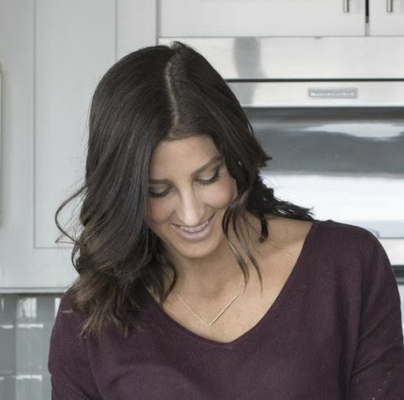%20copy.png?width=300&name=Blog%20Page%20Thumbnail%20Template%20(1)%20copy.png) “Drink more water.” We’ve all heard it. Essential for keeping our bodies happy and healthy, water supports everything from our digestion and skin to our mood and energy levels. With the summer sunshine and heat approaching, water becomes even more critical to our bodies. Yet many of us don’t drink enough water across the day. You may be thinking to yourself, “I know, I need to be drinking more….” But sometimes plain water can be just that…plain. So how can we start getting our hydrated health back on track this summer? Let’s dive in!
“Drink more water.” We’ve all heard it. Essential for keeping our bodies happy and healthy, water supports everything from our digestion and skin to our mood and energy levels. With the summer sunshine and heat approaching, water becomes even more critical to our bodies. Yet many of us don’t drink enough water across the day. You may be thinking to yourself, “I know, I need to be drinking more….” But sometimes plain water can be just that…plain. So how can we start getting our hydrated health back on track this summer? Let’s dive in!
1. Choose chia
Tiny but mighty, chia seeds have some serious star power. These nutrient nuggets are rich in heart-healthy omega-3 fatty acids, inflammation-fighting antioxidants and gut-friendly fiber. The seeds are also hydrophilic, meaning they attract, absorb and retain water. If you’ve ever experimented with adding chia to your favorite foods, you may have noticed a plumping up process turn foods more “pudding-like.” This unique property may help liquids be available to the body for a longer, prolonging our hydration as we go about our day. Use chia seeds as a liquid egg replacement in recipes, add into your oatmeal or throw into a pitcher with mint and fresh lime juice for a refreshing summer beverage.
2. Cut back on caffeine
For many of us, mornings are synonymous with “must have coffee.” Giving us a (sometimes much needed) boost in energy, coffee is rich in disease-fighting antioxidants. Some studies suggest that having two to three cups of coffee per day may help lower the risk of developing certain chronic diseases, including Type II Diabetes. While coffee and other go-to caffeine faves such as green tea and kombucha contribute to daily fluid needs (~11.5 cups for women, ~15.5 cups for men), it’s important to rotate in caffeine-free drinks to your daily routine. Enjoy a “half caf” cup of coffee in the afternoon or sip on herbal teas with a squeeze of lemon for a caffeine-free swap. Caffeine-containing beverages exert a mild diuretic effect on the body, leading to some fluid loss through urine. Given individual fluid needs fluctuate based on multiple factors such as weather and workout regimen, evaluating urine color is best. A light, pale yellow color is a good indicator that we’re well hydrated.
3. Wake up with water
Since we typically haven’t been sipping water throughout the night, we tend to wake up mildly dehydrated as a result of natural fluid loss as we sleep. In addition to reaching for a tall glass of water in the AM, consider ending and starting your day with foods filled with water. We find melons, cucumbers, tomatoes and strawberries at the top of the charts. Top your avocado toast with fresh tomatoes and cucumber slices, add sliced strawberries to oatmeal or freeze melon cubes to quickly add to a simple smoothie.
4. Sip spirit-free
In the United States, alcohol consumption is on the rise. A 2017 study highlighted women, racial minorities and older adults as groups where high-risk drinking, defined as four or more drinks per day for women and five or more per day for men, has been sharply increasing. While sipping a cool cocktail may be a part of some of our social events this summer, it’s important to know how much is too much. The Dietary Guidelines for Americans defines moderate drinking as up to one drink per day for women and up to two drinks per day for men. One drink is equivalent to the following:
- 12-ounces of beer
- 5-ounces of wine
- 1.5-ounces of spirits
Excessive alcohol consumption is linked to both short-term and long-term health risks. Risks range from alcohol poisoning to the development of depression and heart disease. Similar to caffeine, alcohol is dehydrating to the body. A headache, parched lips and elevated heart rate are signs from our body that we may have over indulged and our hydration tanks are running low. Consider rotating in glasses of sparkling water topped with berries, adding a splash of grapefruit bitters for a fresh twist or crafting a signature spirit-free spritzer to bring to your next summer gathering.
Bottom line:
Drinking plain water is one part of the hydration equation. Limiting caffeine and alcohol intake, adding water-rich foods across the day and choosing chia seeds can all help boost our hydration health. To develop more insight into current hydration habits, consider tracking water and fluid intake for a week or so. An app or pen and paper - find what works well for you. Cheers to your health!

